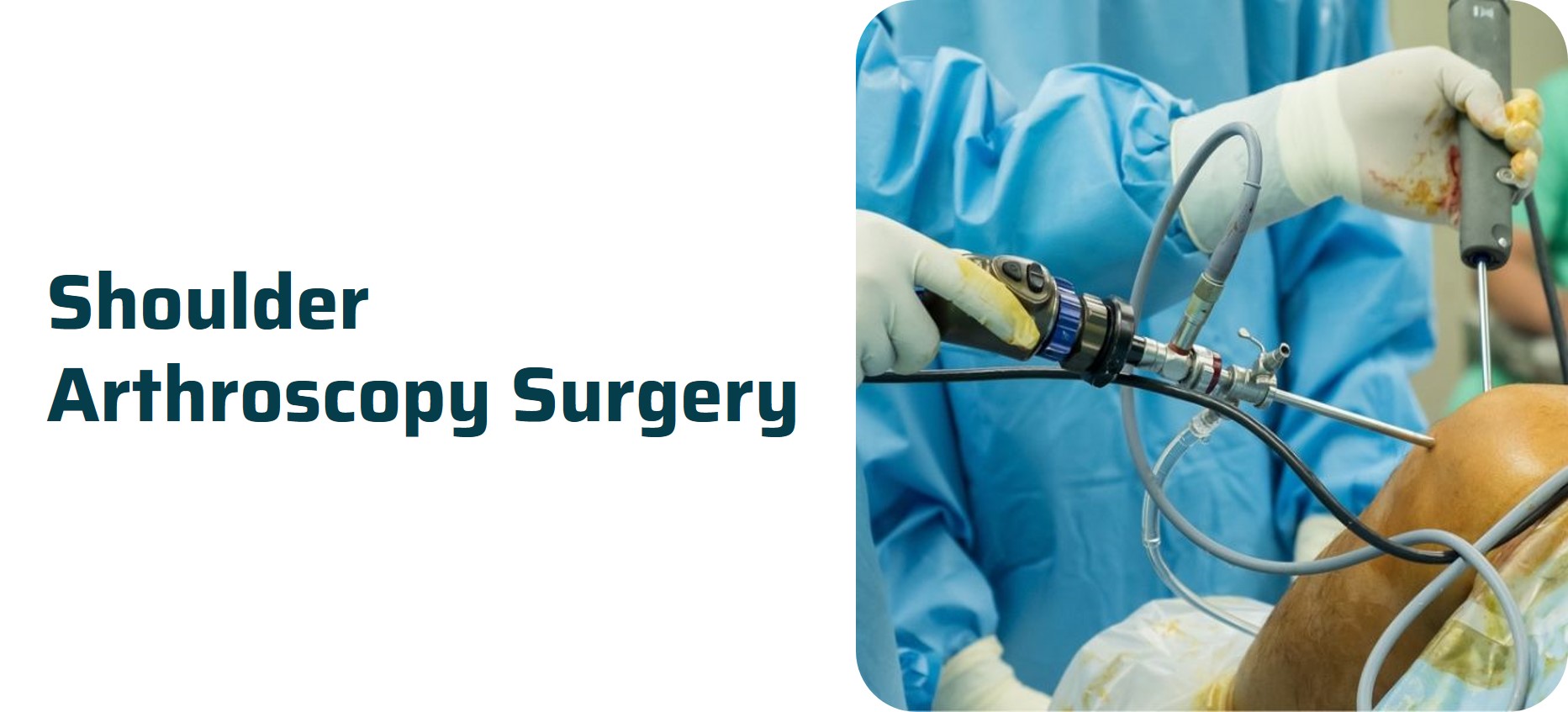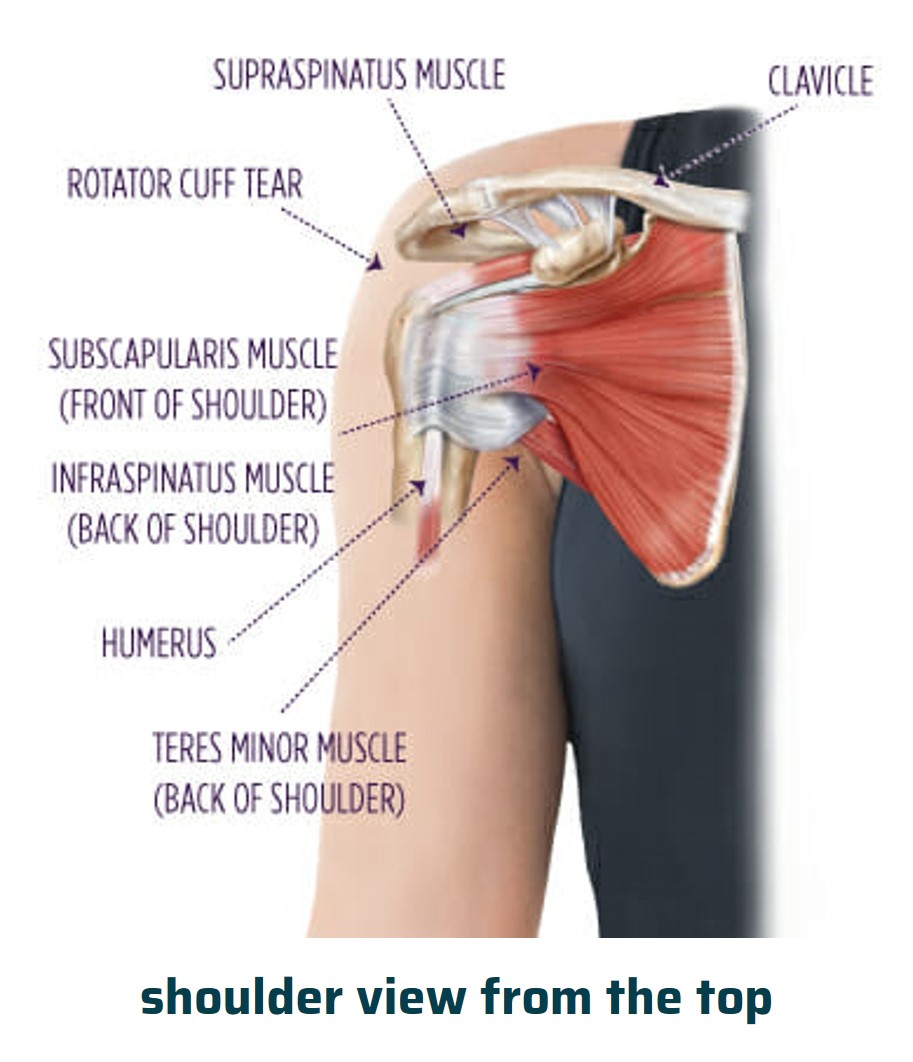
WHAT IS SHOULDER ARTHROSCOPY or SHOULDER ARTHROSCOPIC SURGERY?
Shoulder arthroscopy is a surgical procedure used to visualize, diagnose, and treat various problems inside the shoulder joint and in the space surrounding the rotator cuff. This is done through small incisions that allow the insertion of specialized instruments.
Arthroscopic shoulder surgery is used to treat a variety of common shoulder problems, including bursitis, tendonitis, arthritis, impingement, rotator cuff tears, labral tears and shoulder instability.

The shoulder joint has large ball and shallow cup, one of the big joint which allows a very good access to all its areas to Arthroscopy. The rotator cuff muscle is a prime muscle in stabilizing the shoulder joint, comprising of 4 main muscles (subscapularis, supraspinatus, infraspinatus and teres minor) & allows us to lift the arm above the head.
Due to wear & tear over time or trivial trauma it is common in patients above age of 50 years to develop a rotator cuff tear.
INDICATIONS
- Complete rotator cuff tear
- Frozen shoulder (Adhesive capsulitis)
- Impingement syndrome, post traumatic stiffness
- Recurrent subluxation/Dislocation (Bankarts lesion, Hill–Sachs lesion)
SYMPTOMS
- Severe pain and stiffness in affected shoulder (more during nights disturbing the sleep)
- Inability to actively lift the arm and pick up any heavy object
- Impingement–rubbing of the cuff surfaces on the undersurface of the acromion (or bony ‘roof’ of the shoulder)
- Instability—subtle dislocation of the shoulder joint
- Frozen shoulder—also called adhesive capsulitis is a temporary inflammation and scarring of the shoulder capsule
DIAGNOSIS
Requires detailed clinical examination by an expert followed by the USG and MRI of the affected shoulder. MRI is gold standard for the diagnosis.
The physical examination and history are a reliable means to diagnose rotator cuff weakness and pain. Many times, persons will have no abnormalities on X-ray (the cuff can not be visualized with x-ray), but MRI is very reliable in confirming a suspected diagnosis. Frequently, and MRI arthrogram will be performed.
SHOULDER ARTHROSCOPY SURGERY IMAGES
SURGERY
Typically, surgery requires admission for 2-3 days. Surgery is done under general anesthesia and regional block is given for the pain relief. Surgery requires 3-4 small (key hole) incisions. Post-operative recovery is very smooth and painless.
Traditionally rotator cuff used to be repaired with open surgery leading to adhesions and post-operative stiffness & recovery generally takes a very long time.
POST-OPERATIVE PHYSIOTHERAPY
Shoulder arthroscopy requires very aggressive physiotherapy in presence of an expert for a atleast6-8 weeks in phased manner. Regular follow ups are required to the operating surgeon to upscale the physiotherapy after examining the recovery.
Some early motion is important after rotator cuff repair, but unrestricted motion can endanger the success of the procedure. For the first 3 or 4 weeks, the patient is scheduled to see a physical therapist once or twice per week to monitor the progress of healing and to reiterate the proper exercises.
Patients are almost always satisfied with the range of motion, comfort and function that they achieve as the rehabilitation program progresses.
Shoulder Arthroscopy
Results of post-op 1 month.
Shoulder Arthroscopy
LOOKING FOR A SHOULDER ARTHROSCOPY SURGERY IN AHMEDABAD?
Dr. Rachit Sheth is a Consultant Orthopedic Surgeon in Ahmedabad, specializing in knee and shoulder arthroscopy surgeries. He and his team of arthroscopy surgery doctors in Ahmedabad, have been treating normal to complex cases with most success ratio.
For shoulder arthroscopic surgery in Ahmedabad appointment or consulting, you can contact us.


